Double Eyelid Creation in Guatemala
Search and Compare the Best Clinics and Doctors at the Lowest Prices for Double Eyelid Creation in Guatemala
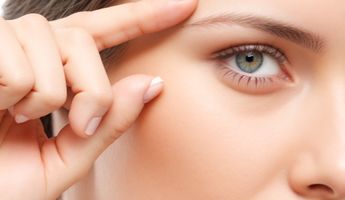
Find the best clinics for Double Eyelid Creation in Guatemala
No clinics available
Thailand offers the best prices Worldwide
Price: $ 220

- Home
- Guatemala
Compare Before & After Photos of _procedure_photos.phpDouble Eyelid Creation
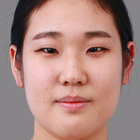

Front view
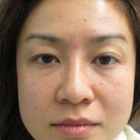
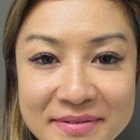
Front view
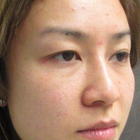
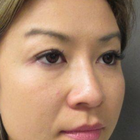
Half-side view
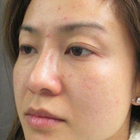

Half-side view
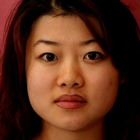
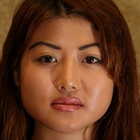
Front view

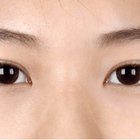
Front view
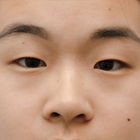
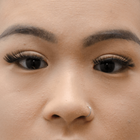
Front view
WHY US?
At Medijump, we're making medical easy. You can search, compare, discuss, and book your medical all in one place. We open the door to the best medical providers worldwide, saving you time and energy along the way, and it's all for FREE, no hidden fees, and no price markups guaranteed. So what are you waiting for?

Free

Best Price

Widest Selection

Risk-Free
What you need to know about Double Eyelid Creation in Guatemala

Also known as Blepharoplasty. This form of plastic surgery is used to correct defects of the eyelids or for aesthetically modifying the eye region of the face. It involves the removal of excess skin and fat from around the eyes and the reinforcement of the corresponding muscle and tendon tissues and is centered around the area between the eyebrow and the upper portion of the cheek. Double eyelid surgery creates a crease that makes the eyes appear larger and more alert. While Caucasians typically are born with a double eyelid crease, approximately 50% of East-Asians do not have a double eyelid crease. Therefore, double eyelid surgery is a highly specialized procedure performed mainly on persons of East-Asian descent. It is the most common type of plastic surgery performed in South Korea, Taiwan, and Hong Kong.
Double eyelid surgery is a safe and versatile surgery for Asians and other patients with monolids. The surgery makes the eyes appear larger and gives them a more alert appearance. There are different techniques that can be customized to achieve the desired results, tailored for each individual patient. Potential patients should consult with a board-certified plastic surgeon to determine which double eyelid surgery technique is the best option to achieve their desired results.
What is the cost of Double Eyelid Creation in Guatemala?
Deciding to go through with the Double Eyelid Creation can depend largely on the financial implications. The expenses associated with such an undertaking can fluctuate considerably due to varying factors. These could include the proficiency level of the surgeon, the complexity of the procedure, and usual prices within the region. Contact your local clinic for more information.
It's vital to remember that a majority of insurance firms do not cover aesthetic procedures such as the Double Eyelid Creation. This is due to the fact that such procedures are generally viewed as elective and not critical for maintaining health. Consequently, these costs are not factored in by health insurance companies. Hence, those who are contemplating this should seriously consider their financial situation and organize their resources accordingly.
What does a Double Eyelid Creation Procedure Involve?
Surgery is performed under local anesthesia and sedation will help you avoid pain and discomfort associated with the surgery. The Doctor draws pre-operative lines on your eyelids and incisions are made along your natural creases, as these creases hide your scars after you recover. If the surgery is planned for both the upper and lower eyelids, the upper eyelid is treated first. Excessive fat, skin, and muscle are removed through this incision and then it is stitched. The same procedure is repeated on the lower eyelid. Sometimes, incisions are made inside your eyelids, this is usually an option for dark-skinned people as white scars look prominent on their skin. Inside incisions will have inside stitches - bandages are applied over the wound.
The three most common techniques for creating a double eyelid crease are the Full Incision, Minimal Incision, and the Suture Technique - you will have the option to discuss with your surgeon about which is the most suitable treatment for you.
How Long Should I Stay in Guatemala for a Double Eyelid Creation Procedure?
This is a short surgical procedure performed in the outpatient department. It takes 1 to 3 hours in the operation theatre after which you do not need to stay in the hospital. You are discharged after a complete medical checkup which is carried out on the same day. You should stay in Guatemala for at least 14 days after you have undergone blepharoplasty surgery. During this period you are kept under observation and you will attend follow up checks. Your health conditions are monitored and stitches are removed after 5 to 7 days. If everything goes fine during this time, you can go home when allowed by your physician.
What's the Recovery Time for Double Eyelid Creation Procedures in Guatemala?
Immediately after the surgery, you will suffer from pain and discomfort and you will also experience blurred vision and puffiness of the eyes. Your eyes become sensitive to light and there is swelling and bruising in the initial days which will subside after 1 to 2 weeks. Several months are required before you will see the final results. You will have to take 2 to 3 weeks off work and after this, you can expect to return to office work. You will have to wait for at least 6 weeks if your job requires physical effort.
What sort of Aftercare is Required for Double Eyelid Creation Procedures in Guatemala?
Consider the following:
- Use ice packs to deal with the swelling and inflammation. Apply ice on your eyes 4 to 5 times a day immediately after the surgery.
- Do not smoke or drink because tobacco and alcohol decrease your natural healing ability.
- Avoid strenuous activities such as the gym, running, swimming, etc. for at least 10 days after the surgery.
- Use prescribed eye drops and ointments regularly.
- Look for any kind of irritation, redness or swelling. Visit your doctor immediately if you experience any issues.
- Do not rub your eyes.
- Avoid direct contact with sunlight. Do not go out for the first couple of days. Use sunglasses if necessary.
- Do not use contact lenses for at least 2 weeks.
- Sleep with your head at an angle of 45° that is slightly higher than your chest.
- Ensure your diet is rich in vitamins.
- Use clean gauze to change your bandage on a daily basis.
- Do not put stress on your eyes.
- Do not get your bandage wet as It can cause infection.
What's the Success Rate of Double Eyelid Creation Procedures in Guatemala?
Double Eyelid Surgery has a high success rate but issues can arise as with any surgery, for example, an infection, blood clot formation, scar hypertrophy, etc. Sometimes, there is re-drooping of your eyelids in cases of failed surgery. Usually, only one surgery is required, but if you are unsatisfied, another surgery is always possible, it will have to wait several months though to give your eyes sufficient time to recover from the primary surgery. According to a study, only 9.5% of the subjects showed some complications after the surgery and revision surgeries are performed in these cases. The rest of the subjects were completely satisfied with the results of the surgery.
For more information about Double Eyelid Surgery with before and after images, watch this short video.
Are there Alternatives to Double Eyelid Creation Procedures in Guatemala?
The following are some effective non-surgical alternatives to double eyelid surgery:
- Botox: with this method, botulinum toxin is injected into the eyelids. This causes relaxation of the muscle. It has immediate results which can last for 3 to 4 months. Follow up treatments will be required to maintain the results.
- Ultherapy: This method makes use of ultrasound rays to stimulate and boost collagen production in the deeper layers of your skin. It gives a fresh and youthful appearance to your skin along with tightening it.
- Dermal fillers: substances such as Restylane and Juvederm are injected into your eyelids. These fillers work to decrease skin lines and wrinkles. They give a lifted appearance to your eyelids.
- Skin resurfacing: a number of treatments come under this category. Such as laser resurfacing, micro-needling, laser treatment, etc. They are helpful in lifting your eyelids non-surgically.
What Should You Expect Before and After the Procedure
Prior to commencing the Double Eyelid Creation, it is necessary to undertake a few preparatory measures. Initiating with an exhaustive dialogue with your medical specialist is vital to comprehend the procedure's full scope and maintain feasible presumptions. The conversation should encompass potential threats, expenditure, recovery duration, and the precise surgical methodology to be employed. Preparatory measures for the procedure often involve particular limitations such as ceasing tobacco usage or abstaining from specific drugs that could escalate the risk of bleeding. It is also recommended to organize for someone to assist you at your residence during the early recovery stage.
The anticipations post-procedure can significantly diverge based on personal health circumstances and the particular surgical approach employed. You may experience some unease, inflammation, and potential blurring of eyesight immediately following the procedure. These symptoms should gradually subside after a few days. Your surgeon will furnish comprehensive instructions for post-operative care which typically comprises moderate usage of cold packs to aid in reducing inflammation, drugs to manage any discomfort, and counsel to evade strenuous exertions. It's vital to comprehend that the final outcome may not be completely discernible until several weeks following the procedure.
What are Potential Risks of Double Eyelid Creation?
Although the Double Eyelid Creation is frequently regarded as safe and successful, it's important to remember that any surgical intervention carries certain inherent risks. There could occasionally be adverse anaesthesia reactions that result in nausea or the want to vomit. Post-operative problems including bleeding or infection are also possible, albeit rarely. The used stitches may result in temporary discomfort, and there may be transient or permanent alterations in sensation or anaesthesia in the area of the eyelids.
When results don't live up to patient expectations, it may be necessary to do additional procedures. Individual characteristics, such as their particular physiological structure and how their body reacts to the operation, can have an impact on the final result. The possibility of facial asymmetry exists, despite its rarity. Patients are strongly recommended to select a highly qualified and experienced surgeon from a reputable clinic in order to reduce these risks. This will guarantee the treatment is completed safely and successfully.
Whilst the information presented here has been accurately sourced and verified by a medical professional for its accuracy, it is still advised to consult with your doctor before pursuing a medical treatment at one of the listed medical providers
No Time?
Tell us what you're looking for and we'll reachout to the top clinics all at once
Enquire Now

Popular Procedures in Guatemala
Prices Start From $16

Prices Start From $108

Prices Start From $101

Prices Start From $5

Recommended Medical Centers in Guatemala for procedures similar to Double Eyelid Creation

- Interpreter services
- Translation service
- Religious facilities
- Medical records transfer
- Medical travel insurance
- Health insurance coordination
- TV in the room
- Safe in the room
- Phone in the room
- Private rooms for patients available

- Interpreter services
- Translation service
- Religious facilities
- Medical records transfer
- Medical travel insurance
- Health insurance coordination
- TV in the room
- Safe in the room
- Phone in the room
- Private rooms for patients available

- Interpreter services
- Translation service
- Religious facilities
- Medical records transfer
- Medical travel insurance
- Health insurance coordination
- TV in the room
- Safe in the room
- Phone in the room
- Private rooms for patients available

- Interpreter services
- Translation service
- Religious facilities
- Medical records transfer
- Medical travel insurance
- Health insurance coordination
- TV in the room
- Safe in the room
- Phone in the room
- Private rooms for patients available
Double Eyelid Creation in and around Guatemala
Introduction
Guatemala is a country in Central America and its territory was once the core of the Maya Civilization. There are numerous historical sites to explore in this country, from Tikal National Park where visitors can learn more about the Maya to the colonial city of Antigua, which is one of the many footprints the Spanish left behind. However, there are other charms as well, such as the many amazing volcanoes, lakes, jungles, and inexpensive food markets. Besides its natural beauty and ancient ruins, Guatemala is also popular among international tourists for its medical tourism. Foreign patients who are looking for a more cost-effective solution for their medical requirements choose Guatemala because the country offers the finest quality healthcare at reasonable rates. On average, medical procedures in this country are 50 to 75% less expensive than in the US. Furthermore, the standard and quality of the hospitals and clinics in this country are on par with those in the USA.
Popular Cities and Regions in Guatemala
The most popular city in Guatemala is Antigua, which was the capital of Guatemala. Located in the central highlands of the country, between three volcanoes, this city is mainly known for its preserved Spanish Baroque-influenced architecture. From its churches, houses, ruins, parks, to its cobbled streets, the city will never cease to captivate visitors. Visit the Plaza Mayor (central square) to admire its awesome palaces, cathedral, and gardens. While most travelers used to skip Guatemala City, the capital of the country, more and more travelers are coming to the city as it reinvents itself as a safe and interesting destination to visit. Another popular city is Panajachel, which is the gateway to the striking Lago de Atitlán.
Transport in Guatemala
The primary airport in Guatemala is La Aurora International Airport, which operates international flights to and from several cities in North and Central America, such as Los Angeles, New York, Mexico City, and San Salvador. Low-cost airlines, including JetBlue and Volaris, serve flights from this airport. The most common way to travel around the country is by pull man (first-class buses+, rental cars, and “chicken bus” (second-class buses). To travel inside cities and towns, taxis and three-wheeled Thai tuk-tuks are widely available.
Visas in Guatemala
Holders of passports of 86 countries, including all EU countries, the US, and the UK, are allowed to visit Guatemala for up to 90 days. Other nationals, including China and Nepal, need to apply for a visa to be able to visit the country.
Weather in Guatemala
Guatemala has two seasons. The rainy season stretches from May through October, with the majority of rain falling between September and October. The dry season extends from November to April, characterized by clear, blue skies. Note that coastal areas can be very humid.
Additional Info
- Local Currency: The official currency is Quetzal (GTQ). 1 USD is approx. 7.6 GTQ.
- Money & Payments: ATMs are widely available. Credit Cards are accepted in most midrange and high-end restaurants and hostels. Tipping is usually expected except by taxi drivers.
- Local Language: Spanish is the official language spoken by 93% of the population. Very few locals speak English. The only places where you can find English speakers are in tourist areas.
- Local Culture and Religion: The culture of the country reflects strong Mayan and Spanish influences. Guatemala has the freedom of religion, but Christianity is the predominant religion.
- Public Holidays: Guatemala celebrates several public holidays, including (but not limited to) New Year’s Day, Labor Day, Army Day, Independence Day, Revolution Day, and Christmas Day.
Popular Searches
- Plastic Surgery in Thailand
- Dental Implants in Thailand
- Hair Transplant in Thailand
- Breast Augmentation Thailand
- Gastric Sleeve in Thailand
- Gender Reassignment Surgery in Thailand
- Laser Hair Removal in Bangkok
- Botox in Bangkok
- Dermatology in Bangkok
- Breast Augmentation in Bangkok
- Coolsculpting in Bangkok
- Veneers in Turkey
- Hair Transplant in Turkey
- Rhinoplasty in Turkey
- Stem Cell Therapy in Mexico
- Rhinoplasty in Mexico
- Liposuction in Mexico
- Coolsculpting in Tijuana
- Rhinoplasty in Korea
- Scar Removal in Korea
- Gastric Sleeve in Turkey
- Bone Marrow Transplant in India
- Invisalign in Malaysia
- Plastic Surgery in the Dominican Republic
- Tummy Tuck in the Dominican Republic
- Plastic and Cosmetic Surgery in Poland
- Rhinoplasty in Poland
- Hair Implant in Poland
- Dental Implants in Poland
- IVF in Turkey